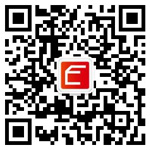

Antigen Information
Assay Format
- Human
- Serum
- Sandwich-based
- Semi-Quantitative
Product Specifications
Product Features
- Small sample volume required (2 µl)
- High density (simultaneously detect 33 autoantibodies)
- High sensitivity
- Large dynamic range
- Suitable for high-throughput assays
- High efficiency and accuracy
- Affordable, quick and simple to use
- Customizable: Tell us the autoimmunogens you"re interested in
Target Name
Scroll over each target protein for more information | ||||
Alanyl-tRNA Synthetase | Cytokeratin 8(KRT8)
| Centromere protein B(CENP-B)
| Centromere protein A(CENP-A)
| dsDNA |
Gliadin | Glycine-tRNA ligase(AP-4-A synthetase/GlyRS)
| Nuclear pore protein gp210(POM210/Nucleoporin Nup210)
| Histone H2A | Histone H2B |
Cytokeratin 19(KRT19)
| Histidine-tRNA ligase(HisRS)
| Lupus La protein(SS-B)
| LC-1 | Cytokeratin 20(KRT20)
|
M/Scl 100 | M2 | Mi-2 | Myeloperoxidase
| Nuclear pore glycoprotein p62(Nucleoporin Nup62)
|
Calcitonin
| PCNA
| Myeloblastin(PR3/C-ANCA)
| TRIM21(Ro(SS-A)/SS-A)
| TRIM21(Ro(SS-A)/SS-A)
|
DNA topoisomerase 1(DNA topoisomerase I)
| Sm core protein | Sp-100
| Threonine-tRNA ligase(ThrRS)
| Thyroglobulin
|
Thrombopoietin(TPO)
| Transglutaminase 2(TGM2)
| snRNP70
| ||
Application Notes
IgG autoantibody profiling for following common autoimmune diseases, but may not be limited to:
- Systemic lupus erythematosus (SLE)
- Sjøgren"s syndrome
- Rheumatoid arthritis
- Systemic Sclerosis/CREST syndrome
- Primary biliary cirrhosis
- Autoimmune hepatitis
- Hashimoto"s thyroiditis
- Polymyositis/Dermatomyositis
- System vasculitis
- Celiac disease
The following table shows multiple IgG-type autoantibodies that can be detected in patient sera of different autoimmune diseases.
| Autoimmune Diseases | Target No. | Autoimmunogens |
|---|---|---|
| Systemic lupus erythematosus (SLE) | #5 | dsDNA |
| #9 | Histone H2A | |
| #10 | Histone H2B | |
| #22 | Proliferating Cell Nuclear Antigen (PCNA) | |
| #26 | Scl-70 (DNA topoisomerase-1) | |
| #33 | U1-snRNP70 kDa | |
| #12 | Jo-1 (histidyl tRNA synthetase, histidine-tRNA ligase) | |
| #27 | Sm/Smith/snRNP core protein | |
| Rheumatoid arthritis | #21 | CCP peptide |
| #2 | KRT8 | |
| #11 | KRT19 | |
| #15 | KRT20 | |
| Systemic Sclerosis / CREST Syndrome | #4 | Centromere Protein A (CENP-A) |
| #3 | Centromere B (CENP-B) | |
| #16 | M/Scl 100 | |
| #27 | Sm/Smith/snRNP core protein | |
| Primary biliary cirrhosis | #8 | gp-210 |
| #17 | M2 | |
| #20 | Nup62 | |
| #28 | sp100 | |
| Autoimmune hepatitis | #14 | Liver cystolic antigen type 1 (LC-1) |
| Hashimoto"s thyroiditis | #30 | Thyroglobulin (TG) |
| #31 | Thyroid peroxidase (TPO) | |
| Polymyositis / Dermatomyositis | #1 | Alanyl-tRNA Synthetase (PL-12) |
| #7 | Glycyl-tRNA Synthetase (EJ) | |
| #18 | Mi-2 | |
| #29 | Threonyl-tRNA synthetase (PL-7) | |
| #14 | Liver cystolic antigen type 1 (LC-1) | |
| System vasculitis | #19 | Myeloperoxidase (MPO), p-ANCA |
| #23 | Proteinase-3 (PR3), c-ANCA | |
| #3 | Centromere B (CENP-B) | |
| Sjøgren"s syndrome | #13 | La/SS-B |
| #24 | Ro/SS-A (52 kDa) | |
| #25 | Ro/SS-A (60 kDa) | |
| Celiac disease | #6 | Gliadin |
| #32 | Tissue Transglutaminase (tTG) |
- RayBio® Human Autoimmune Disease IgG Autoantibody G1 array slide
- RayBio® G-series antibody array accessory (including slide incubation chamber assembly, gasket, protective cover, snap-on sides and adhesive film)
- Blocking Buffer (8 ml/bottle)
- Wash Buffer 1 (30 ml/bottle)
- Wash Buffer 2 (30 ml/bottle)
- 1,000X Biotin-conjugated anti-human IgG (1.5 µl/1 vial)
- 1,500X Streptavidin-Conjugated Fluor (1 µl/vial)
- Small plastic boxes or containers
- Orbital shaker or oscillating rocker
- Pipettors, pipette tips and other common lab consumables
- Distilled water
- Aluminum foil
- Laser scanner for fluorescence detection
See Manual for relevant protocols.
Below is the quick protocol for the experienced users.

Typical Data
The following Figure 1 represents a typical result using serum on the RayBio® Autoimmune Disease IgG Autoantibody Detection Array (Cat #. PAH-AIDG-G1). The protein arrays were incubated with 200-fold diluted serum samples from normal individuals and patients with different autoimmune diseases. After washing steps, the arrays were sequentially incubated with biotin-labeled anti-human IgG antibody and fluorescent dye-labeled streptavidin. The signals from the bound autoantibodies were captured with a fluorescence scanner.
Sample diluent alone (Figs. 1A & 1B) and normal sera (Figs. 1C & 1D) were used as negative controls, and the arrays signals indicate that no significant background occurred. In some cases, a negligible signal can be observed, which may be caused by non-specific binding derived from the biotin-labeled anti-human IgG antibody and/or fluorescent dye-labeled streptavidin. However, these weak background signals will be subtracted in subsequent data analysis procedures and will not affect sample test results. A strong binding signal was detected in multiple targets among different autoimmune disease patients: systemic lupus erythematosus (Figs.1E & 1F), Sjøgren"s syndrome (Figs.1G & 1H), system vasculitis (Figs.1I & 1J), and primary biliary cirrhosis (Figs.1K & 1L).

Fig 1. Typical result using serum on the RayBio® Autoimmune Disease IgG Autoantibody Detection Array. The protein arrays were incubated with diluent alone (A, B), diluted serum samples derived from normal individuals (C, D) and those from various autoimmune disease patients (E-L). Yellow boxes, show various controls as indicated (biotin-labeled BSA, human IgG and IgA).
Storage/Stability
No posts found








